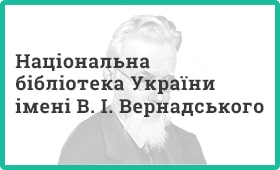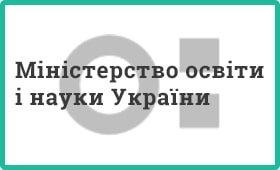| JEL Classification: C15; M21; O22 |
DOI: https://doi.org/10.31521/modecon.V22(2020)-19 |
Kharchenko Volodymyr, PhD (Economics), Associate Professor of the Department of Information Systems and Technologies, National University of Life and Environmental Sciences of Ukraine, Kyiv, Ukraine
ORCID ID: 0000-0001-5067-7181
e-mail: vkharchenko@nubip.edu.ua
Kharchenko Hanna, PhD (Economics), Associate Professor of the Department of Management named after prof. J. Zavadskiy, National University of Life and Environmental Sciences of Ukraine, Kyiv, Ukraine
ORCID ID: 0000-0002-0705-447X
e-mail: kharchenko.a.a@nubip.edu.ua
Simulation Modeling in Assessing the Effectiveness and Risk of Investment Projects
Annotation. Introduction. The article deals with the modeling features in the implementation of investment projects using the Monte Carlo method.
The purpose of the article is to substantiate the feasibility of using economic and mathematical models to identify the risks of investment projects in agricultural production, taking into account the randomness of factors.
Results. The expediency of using this method during the analysis of projects in agriculture is determined. This type of modeling is a universal method of research and evaluation of the effectiveness of open systems, the behavior of which depends on the influence of random factors. Particular attention is paid in such cases to decisions on the implementation of investment projects. The expediency of using this method in the analysis of projects in agriculture is determined. The main characteristics of the investment project are considered: investments involve significant financial costs; investment return can be obtained in a few years; there are elements of risk and uncertainty in forecasting the results of the investment project. The algorithm of the analysis of investment projects consisting of various stages is offered. The importance of investigating the risks of investment projects in agricultural production is substantiated. It is investigated that the basis of the Monte Carlo method is a random number generator, which consists of two stages: generation of a normalized random number (uniformly distributed from 0 to 1) and conversion of a random number into an arbitrary distribution law. The task of choosing an investment project for a pig farm is proposed. The calculations revealed that the amount of the expected NPV is UAH 63,158.80 with a standard deviation of UAH 43,777.90. The coefficient of variation was 0.69, so the risk of this project is generally lower than the average risk of the investment portfolio of the farm.
Conclusions. The results of the analysis obtained using the method of Monte Carlo simulation are quite simple to interpret and reflect the change of factors over a significant interval, taking into account the probabilistic nature of economic factors. Thus, this method allows the implementation of the investment project to assess the impact of uncertainty on the final result of the project.
Keywords: simulation modeling of investment projects; investment efficiency; Monte Carlo method; investment risks; attractiveness of investment project.
References:
- Blank, I. A. (2005). Upravlenye fynansovymy ryskamy. Kyiv. Nyka-Tsentr [in Russ.].
- Karlberg, K. (2002). Biznes-analiz s pomoshchiu Microsoft Excel (2nd ed). Moskva. Viliams [in Russ.].
- Kopishyns’ka,, Utkin, Yu., Kartashova, O. (2017). Application of the Monte Carlo method to support decision-making on the allocation of investments. Actual problems of economics, 5 (191), 199-207 [in Ukrainian].
- Lukasevych, (1998). Analyz fynansovykh operatsyj. Metody, modely, tekhnyka vychyslenyj. Moskva: Fynansy [in Russ.].
- Lukashov, A. (2007). Monte Carlo Method for Financial Analysts: A Short Guide. Upravlenie korporativnymi finansami, 1, 22-39 [in Russ.].
- Piddubna, O. & Lytvynova, O. (2013). Methods of simulation modeling in the analysis of economic systems. Investytsii: praktyka ta dosvid, 24, 65-69 [in Ukrainian].
- Kharchenko, V., Kharchenko, H. (2015). Innovacijno-investycijne zabezpechennja formuvannja resursnogho potencialu siljsjkoghospodarsjkykh pidpryjemstv. Kyiv: Komprint [in Ukrainian].
- Burger, E. B., Starbird, M. P. (2005). The Heart of Mathematics: an Invitation to Effective Thinking.New York: Springer-Verlag, p. 546.
- Suhobokov, A. (2007). Application of Monte Carlo simulation methods in risk management. Journal of Business Economics and Management, 8:3, 165-168. https://doi.org/10.1080/16111699.2007.9636165.
- H., Kharchenko. V. & Malak-Rawlikowska, A. (2018). Investment expenditures in Ukrainian agricultural enterprises: prognosis and development of appropriate investment strategy. Roczniki Naukowe Ekonomii Rolnictwa i Rozwoju Obszarów Wiejskich, 105(2), 71-81. DOI: 10.22630/RNR.2018.105.2.17.
- Kadebska, E., Kharchenko, H., Kharchenko, V., Tereshchenko, S. & Doroshenko, H. (2020). An analysis of modelling of the consumption of organic products and strategic for increasing its production in Ukraine. International Journal of Advanced Science and Technology, 29(8s), 250-257. Retrieved from http://sersc.org/journals/index.php/IJAST/article/view/10496.
Received: 23 July 2020

|
How to quote this article? |
| Kharchenko V., Kharchenko H. (2020). Simulation Modeling in Assessing the Effectiveness and Risk of Investment Projects. Modern Economics, 22(2020), 119-124. DOI: https://doi.org/10.31521/modecon.V22(2020)-19. |










 Українська
Українська